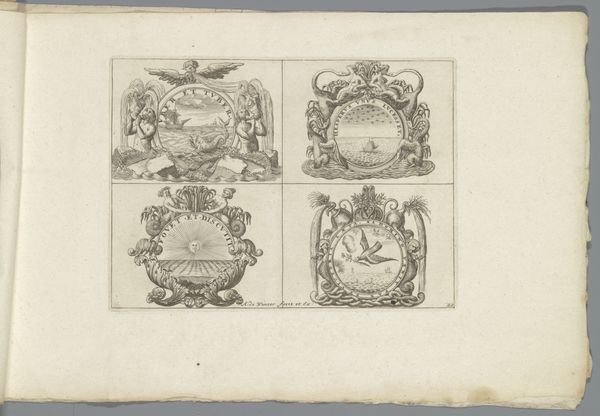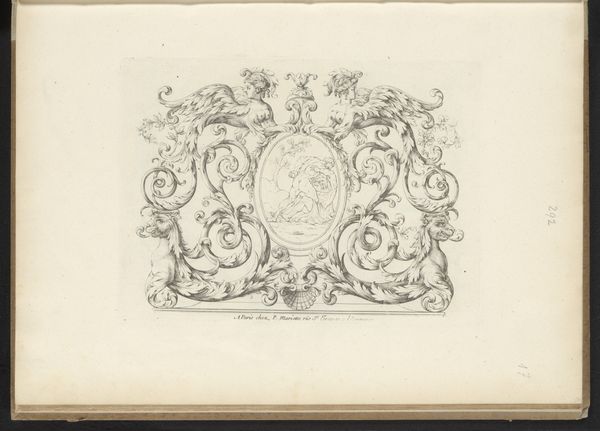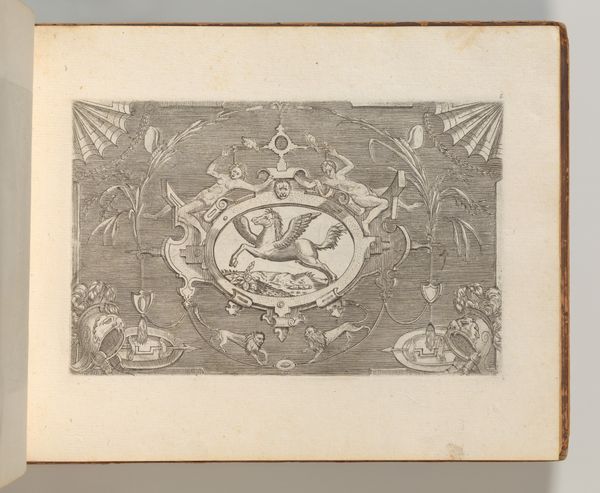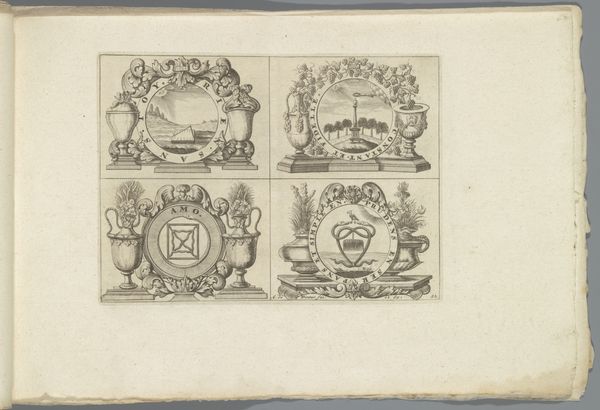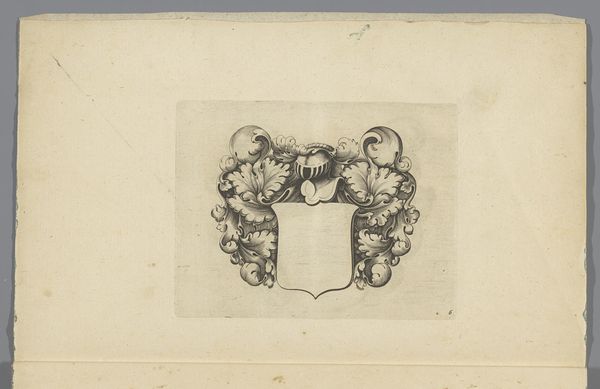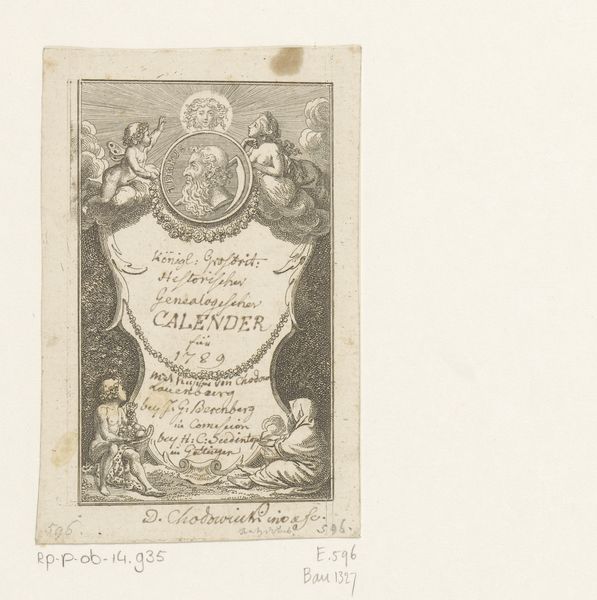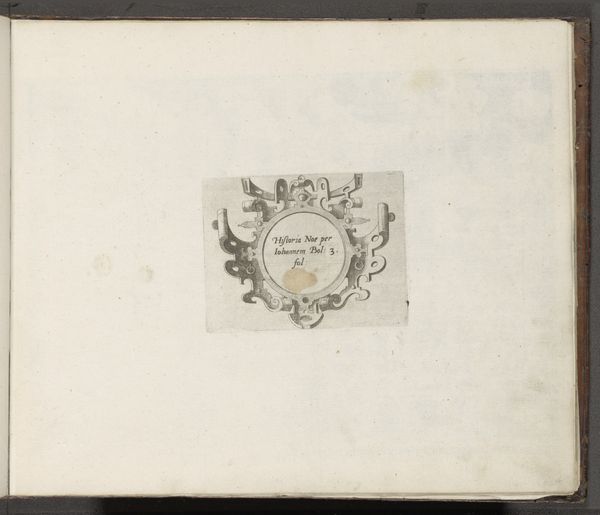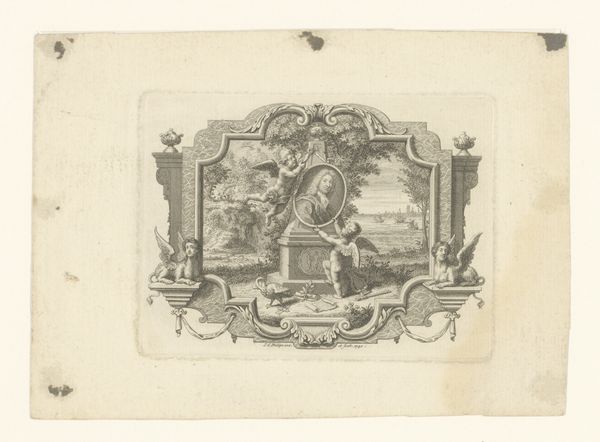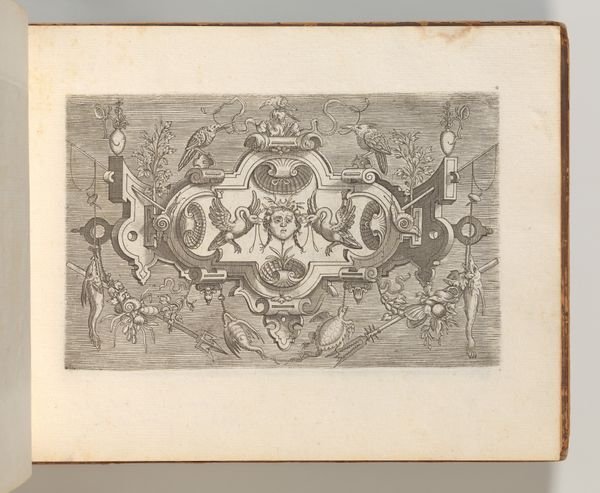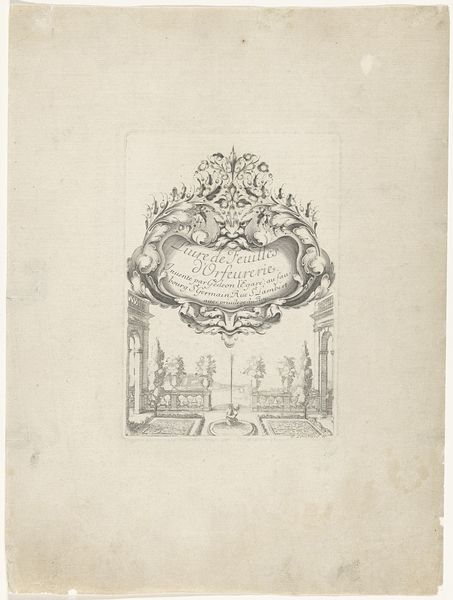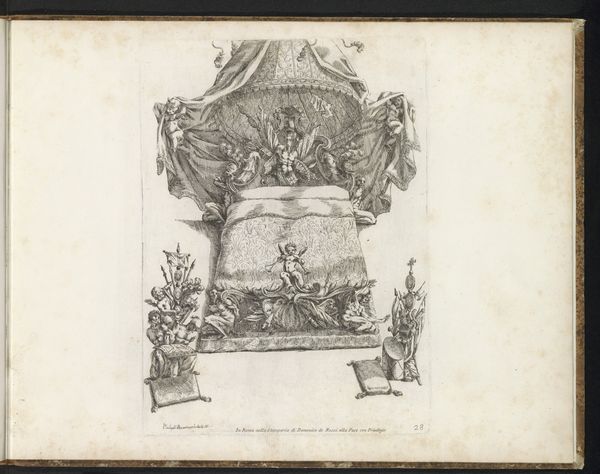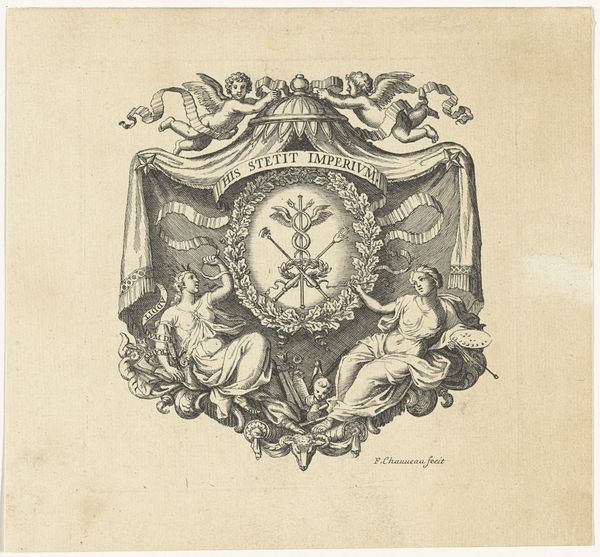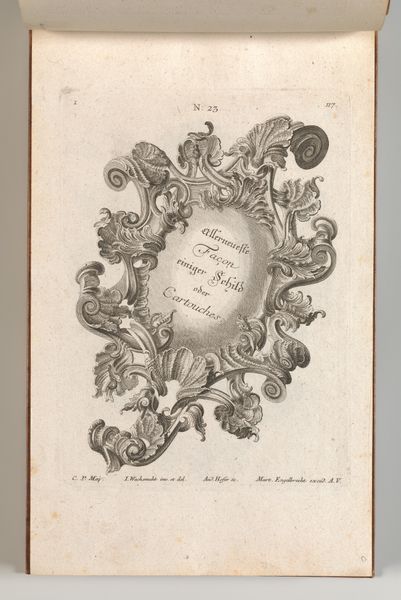
drawing, paper, ink
#
drawing
#
baroque
#
paper
#
form
#
ink
#
line
#
watercolor
Dimensions: height 115 mm, width 150 mm, height 305 mm, width 190 mm
Copyright: Rijks Museum: Open Domain
Editor: Here we have "Nieuwe Wapen Schilde," an ink and watercolor drawing on paper, made anonymously sometime between 1630 and 1680. It's quite striking how the ornate Baroque foliage surrounds this very empty shield. What strikes you most about this work? Curator: It's tempting to focus on the visual absence you noted. But consider the paper itself, and the labor involved in producing the ink. These were precious commodities. This wasn't just a drawing, but a blueprint, a design *meant* for reproduction, for replication in metal, embroidery, or even architecture. How does knowing this alter your understanding? Editor: I hadn't thought about it that way. So the drawing is less about the artwork itself, and more about the potential for its dissemination. The empty shield becomes a space for endless iterations? Curator: Precisely. And what does that say about the social context? Heraldry wasn’t just about representing a family; it was about displaying power, wealth, and belonging. This drawing facilitates that. Its materials literally enable the *making* of status. This work highlights consumption itself as creation. Do you see how that challenges typical art-historical narratives? Editor: Definitely. I usually think of Baroque art in terms of finished, grand displays, but this feels like a behind-the-scenes glimpse at the nuts and bolts, or rather, the ink and paper, of constructing an image, its process and production. It feels oddly... raw, or at least more process oriented than most other Baroque displays of grandeur I can recall. Curator: Exactly. By examining its materiality, we expose the relationship between artistic production, social aspiration, and the burgeoning systems of economic exchange in that period. Editor: I see it now. It's less about what's depicted and more about what it enables. Thank you. This gives me a completely fresh way of looking at Baroque art!
Comments
No comments
Be the first to comment and join the conversation on the ultimate creative platform.
